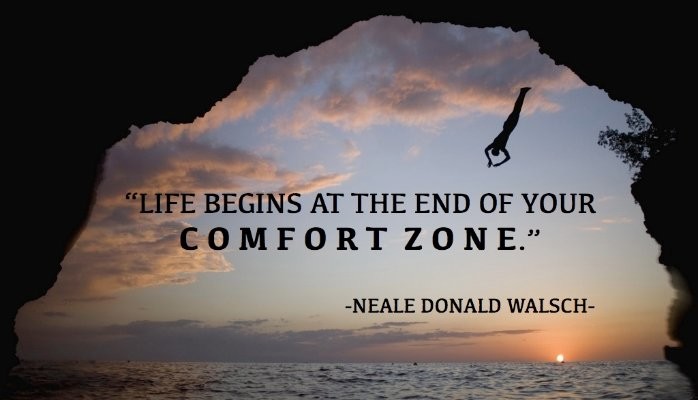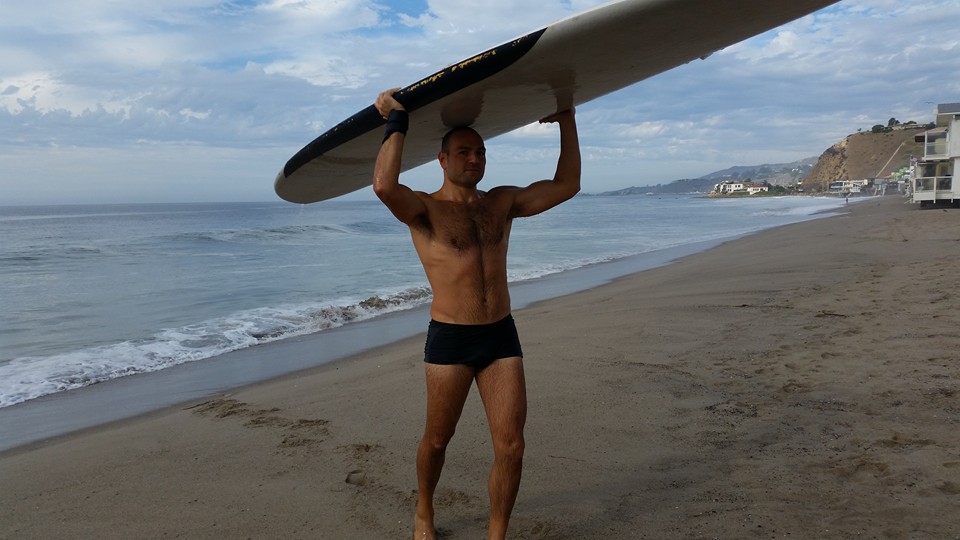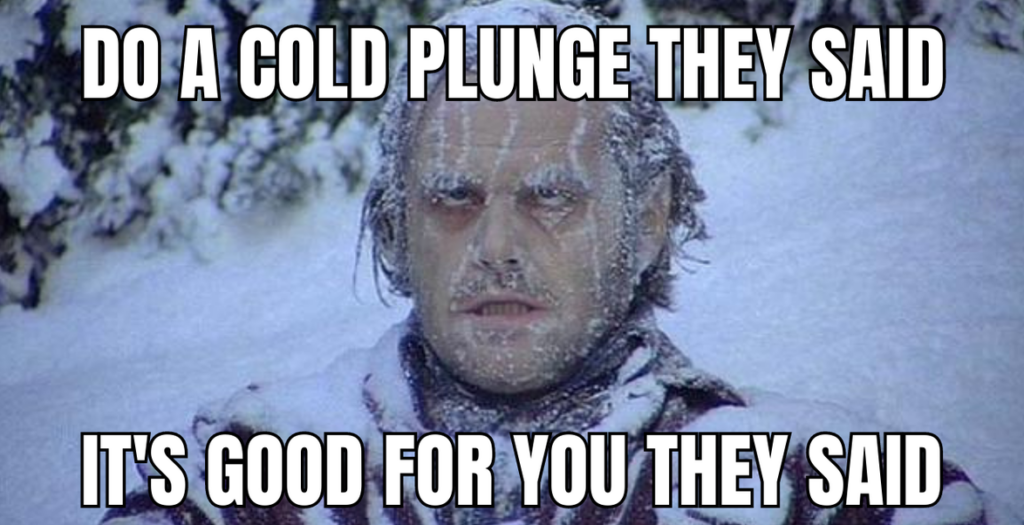The Insane Benefits of Cold Showers and How To Best Utilize Them

After being constantly inundated with the cold water immersion craze (such as ice baths or cold showers), I’ve learned of some insane benefits that I wanted to share, my personal experience, the pros/cons of different ways of going about it (ice bath vs cold shower) and how best to utilize them in regards to the rest of your training or workouts.

My Previous History with Cold Exposure: It was something I was doing for 10 years, for fun, in the ocean, before it was a “thing.”
When I lived close to the beach from 2008 to 2018, I used to go into the cold ocean multiple times a week, far before Wim Hof, Joe Rogan or Andrew Huberman started ranting and raving about it. So, I’m not a newbie when it comes to going into really cold water, however, why I did it was very different than the reasons cite now.
I would go in the ocean because it was exciting and loved the connection to nature it provided. I loved getting in sync with the waves, diving underneath them to get beyond the break, float and enjoy those pure moments. Each time I’d enter, I would imagine myself connecting to the entire ocean and all the life in it. It was always extremely invigorating and also awesome seeing prehistoric-looking pelicans soaring above and little bait fish flicking about the surface. I personally loved how resilient it made me to the cold in general. People would be on shore, in their sweaters and beanies, saying they were cold just looking at me as I would be walking out in my speedo. Meanwhile, I would be super energized and happy to be alive. I believe it was one of the major reasons I would catch a cold no more than once every 5 years.
When I moved away from the beach 5 years ago, that consistent practice fell by the wayside and I totally didn’t even think to do ice baths or cold showers at home. I would take a cold shower occasionally in the summer to cool off but recently when I discovered the crazy benefits from the most recent studies and I thought to myself, well, why not do this at home? Granted, cold showers are not even remotely as interesting or fun as dancing in the free, open ocean. It’s more like the sterile, safe, captivity version of seeing wildlife in the zoo. But I said what the hell, I’ll do it and see how I feel. I will share my experience with it but first let’s talk about those proven benefits, shall we?

What are the benefits of shocking your body with cold water?
- Better mood: The downright most insane benefit that convinced me to do it is the fact it significantly increases dopamine levels. Dopamine is the chemical responsible for your happiness, mood, focus, and goal-directed behavior. And it doesn’t just elevate it slightly. It elevates dopamine levels by 250% and then more importantly, it stays elevated throughout the day. There is not an antidepressant drug in the world that can do this. Many drugs can spike dopamine, but then it returns to baseline soon afterwards, or worse, it depletes it and you end up feeling worse afterwards unless you continually take the drug. This is its biggest benefit, by far.
- Increased productivity: Related to this, in the same study they found there is also a 530% increase in adrenaline (due to it signaling the fight-or-flight response) which ends up increasing energy and focus well after the cold shower is done because these levels stay elevated for hours afterwards as well.
- Improved metabolism: A major source of heat within the body is cellular respiration which are the metabolic processes happening in every cell of your body. These chemical reasons are not very efficient. When glucose releases energy, 60% of it is given off as heat which is why your core body temperature is nearly 100°F, just like a car engine that’s burning gasoline or an incandescent light bulb being fed electricity. Most of that energy is wasted and given off as heat which is why car engines and light bulbs are very hot. So when your body is cold and it needs to heat itself up, it ramps up all the metabolic processes and that increases the amount of calories burned.
- Improved insulin resistance and sensitivity: Cold water immersion seems to reduce and/or transform fat tissue, as well as reduce insulin resistance and improve insulin sensitivity.
- Brown fat is what breaks down sugar and fat to create heat and maintain body temperature. White fat stores energy. Cold temperatures activate brown fat, which leads to these various metabolic changes in the body.
- Faster Recovery: Cold water immersion speeds up recovery. This can be most useful during multi-day sports competitions where you’ve already done all your training and just need to be your best day after day.
What are the drawbacks?
- Avoid doing it right after strength training: Doing cold water immersion after resistance training inhibits muscular hypertrophy (muscle mass growth). Since the cold exposure reduces the inflammation and helps you recover faster, it does so at the expense of you being able to grow your muscles. So if you’re trying to increase your muscle mass, don’t do this cold exposure for at least 4-6 hours until after training. (Side note: the study shows you still gain strength, but hypertrophy and strength go hand in hand in the long run.)
- Ice baths are often inconvenient or impractical: The lack of accessibility makes them impractical for many people. Cold showers, however, are far more practical, but if you live somewhere hot, the shower might not be very cold.
- Discomfort: This is an obvious one, in that it obviously feels uncomfortable and it takes a will power to roll out of a warm bed and go straight into a cold shower. However, that exposure to discomfort builds tolerance for it the rest of the time.

A note on why discomfort is good for you
We live in a society now that has access to the most comfort than ever before in history. So people think, “I don’t want to feel cold” and keep the heat on high and try to live in a perfect, temperature controlled environment. But that results in a lowered ability to buffer that cold. So what ends up happening is that what used to be a tolerable temperature, feels colder to them because they have narrowed the window of what they could deal with comfortably. So now, the world is actually MORE stressful for them.
When we seek comfort, we don’t find long-term happiness. We actually, progressively, take away our resilience from the world and take away our ability to maintain our happiness. When we seek some level of struggle, something that forces us to our edge of adaptation, then we grow in a way that allows us to better sustain our happiness. And best of all, when we push ourselves to the limit, we learn something about ourselves on a deeper level.

So, how cold does the water need to be?
- You want it to be as cold as you could handle. Everyone is different and in the beginning you want to start with warmer exposure and as you get used to it over the sessions, you could experiment with lower temperatures.
- Recommendations generally range from 40°F to 60°F (4 to 16°C).
- For some people, 60°F (16°C) water is going to be the limits of what they can handle for those few minutes.
- For others, 40°F (4°C) is going to be what they can handle.
- Eventually, you will get used to the 60°F and can handle colder water.
For how long should you do it?
- Minimum one minute per session to start. As for the maximum, no more than 5 minutes is needed if it’s cold enough at the limits of what you could handle.
- Susanna Soeberg who has studied this extensively says the minimum threshold for the benefits is 11 minutes total per week, divided into 2-4 days. I should clarify that most of these studies are done with ice baths. If a shower is warmer, then a bit longer is likely necessary.
So, should you do an ice bath or cold shower?
Technically, the most effective is an icy cold plunge with your whole body submerged and requires the least time because it’s going to be the coldest. But most people don’t have access to such a tub so the second best option is the cold shower and that’s the most accessible, practical thing for most people.
From my experience, a cold shower is more shocking to me because I’m constantly moving around and exposing cold water to different parts of my body. Whereas if I go in the tub, I could just focus on my breathing and it’s far easier to get into a meditative headspace. I think why people like it a lot is it forces you to get into a meditative state, which is a rare experience in this day and age. (It’s also unnecessary to do such a thing if the reason you’re doing it is to meditate. You could meditate without subjecting yourself to extreme acts.)
What are the pros and cons of doing an ice bath at home?
- Pros:
- It’s most likely going to be much, much colder than a shower.
- It’s a far more of a meditative process since you could just sit in the tub and stay still.
- Cons:
- Requires a bath tub or space for a cold plunge-tub.
- Requires a ton of water and takes a long time to fill up (15 minutes or more).
- Requires ice, and lots of it (20lbs or more), which can be very expensive to do regularly. And then more time for the ice to cool down that water.
- Dedicated cold plunge tubs are very expensive: Ranging between $3000 and $12000. (Read about the chest freezer alternative in the next sections!)
How much ice is required to add to a bath tub?
In general, 20lbs of ice will drop the temperature by 15°F (9°C). So depending on how warm your water is to begin with, determines how much ice you need to get it to that 60°F level or lower.

Some people just buy disposable water bottles and keep them in the freezer. A standard water bottle is 16.9oz which is about 1.1lbs so 20 of them could help lower the by that 15°F if you could fit them in the freezer. Some people buy a chest-freezer just for this purpose and store 20-40lbs of reusable ice packs.
Inexpensive Cold Tub Alternative: Buy a Chest Freezer Dedicated For This
Many people buy a large chest freezer and use that solely for their cold plunge. A 7 cubic foot one like this is only $300 and most people fit inside it by sitting in it (not laying back). It costs a fraction of the price of a fancy looking tub. This video goes over how to convert a chest freezer into an ice bath. All he does is fill the gaps with silicone sealant (one time thing to do), fill the water with a dedicated in-line water filter, and add hydrogen peroxide to keep the water clean. He also adds a timer to it so it automatically turns on for only 2 hours overnight so it’s ready in the morning. Every 3 weeks he drains it (by unplugging the drain hole) and refills it with clean water later on.

When should you avoid cold water immersion?
- Do not do this immediately after strength training, as mentioned before, it reduces hypertrophy effects, so it is better to do it before or wait at least 6-8 hours or more after training.
- Do not do this before bed as it will make it harder to fall asleep since it energizes and wakes up the body.
Okay, what about hot water, sauna, steam room?
- Taking a hot shower or sauna/steam room before going to bed will help you sleep better. Your body falls asleep best when the core body temperature is dropping. So you might be wondering why would you want to heat up your body before bed? Well it’s really nifty actually: When you expose your body to heat, your body does everything in its power to cool your body down (e.g., blood vessels dilate, respiratory rate increases causing heat to be expelled from your breath) and your core body temperature ends up dropping far more than it would’ve without that heat exposure.
What do I do and what’s been my experience?

- I don’t have space for a cold tub or chest freezer in my apartment. I do have a bath tub, but it takes a long time to fill up and so I prefer to do a cold shower.
- I do it first thing in the morning, immediately after I roll out of bed. This way the water is coldest and it doesn’t interfere with any strength training I do later on.
- I will also usually do it after any intense cardio or sport if I want to play again the next day.
- I choose to do it every other day. I started with 1 minute at first and quickly made it 2 minutes. Nowadays, 3 minutes is my baseline which helps me reach my goal of 11 minutes a week very easily. The amount of time spent (a few minutes) is almost nothing. Procrastinating by making tea or coffee instead takes way longer than this little experience.
- If I’m dreading going in, I will do the Wim Hof “fire breathing” method: Inhale sharply and powerfully through the nose and let it go out the mouth naturally, 30-40 times. It is supposed to warm you up and make it easier to tolerate the cold and it definitely works.
- Right before getting in, I will have my phone nearby and tell Siri to set a timer for 3 minutes.
- I feel very happy afterwards. I not only feel energized, focused and productive but cheery. The colder it is, the more I seem to feel exquisite afterwards and ready for life.
How do you recommend we start going about it?
Keep it simple:
- Do it every other day.
- For at least one minute.
- First thing in the morning.
- As cold as you could handle.
Overall, don’t overthink it. Start with the shower, as cold as you could handle safely and don’t overcomplicate it with the tub and ice in the early stages.
In conclusion, I hope this article was helpful for you to understand the benefits, drawbacks, when best to do it (before strength training), when to avoid it (before bedtime) and how to go about it, whether it’s a tub with ice, a chest-freezer or just a plain-jane cold shower! It has been an extremely easy thing to incorporate in my life and is always a very invigorating experience that I never regret. Even though it’s nothing like getting in the dynamic ocean, it’s an extremely methodical and straight forward, efficient thing to do, which I like because it reduces all the excuses to avoid it.






